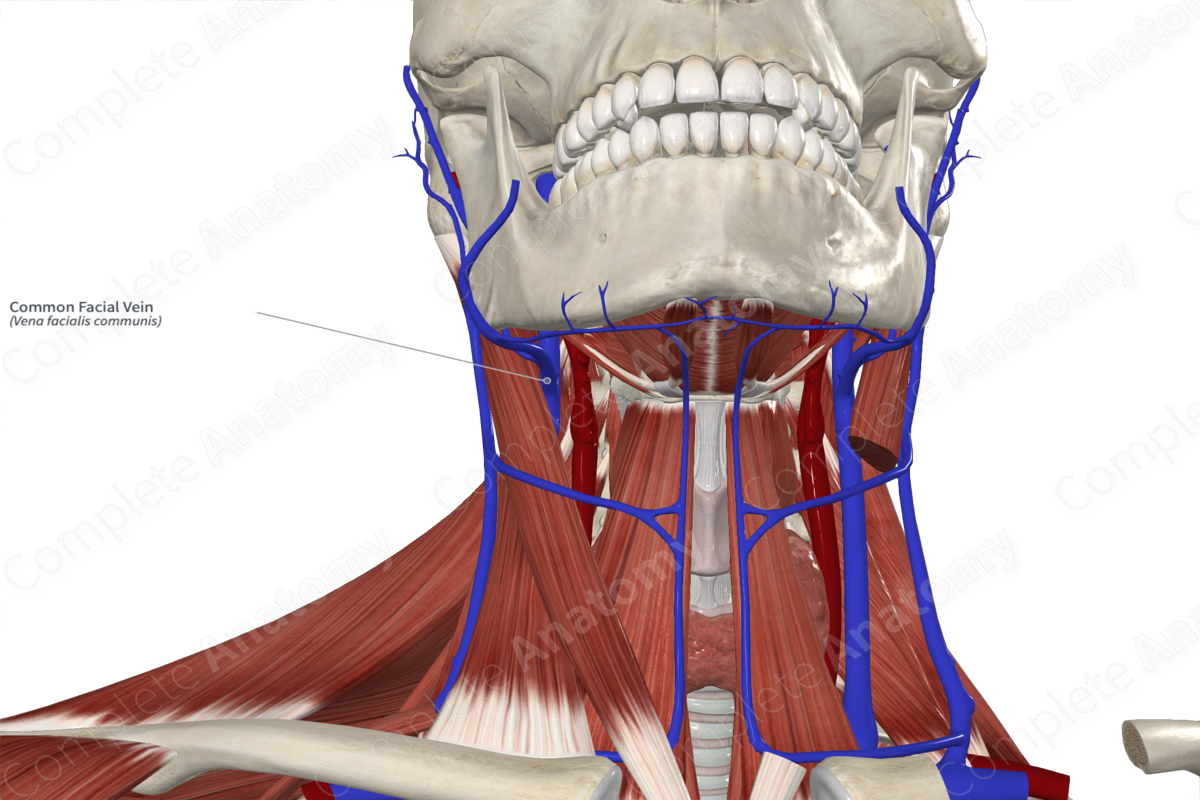
Quick Facts
Origin: Formed by the union of the facial vein with the anterior division of the retromandibular vein.
Course: Descends in the neck to empty into the internal jugular vein.
Tributaries: Lingual vein.
Drainage: Face.
Related parts of the anatomy
Origin
The facial vein pierces the investing layer of deep cervical fascia below the border of the mandible. Here it unites with the anterior branch of the retromandibular vein to form the common facial vein.
Course
The common facial vein descends in the neck and crosses over the external carotid artery to eventually enter the internal jugular vein below the hyoid bone. An atypical drainage of the vein into subclavian or external jugular has been reported as well (A and Rabi, 2011).
Tributaries
The lingual vein joins the common facial vein.
Structures Drained
The common facial vein typically drains into the internal jugular vein at approximately the level of the hyoid bone.
References
A, B. and Rabi, S. (2011) 'Anatomical variations in termination of common facial Vein', JCDR, 5(1), pp. 24-27.
Learn more about this topic from other Elsevier products





